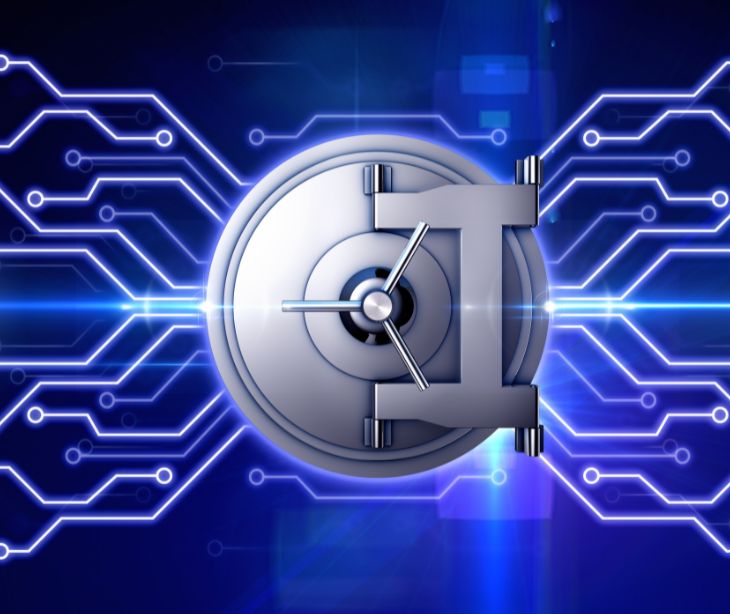
The OSI model, short for open systems interconnection model, is a conceptual framework developed by the International Organization for Standardization (ISO) to facilitate communication between different computer systems. It serves as a universal language for networking, allowing diverse systems to communicate using standardized protocols. According to Technation, “With the rise of networked medical devices and the increasing importance of data-driven health care, the lines between clinical engineering and IT are becoming increasingly blurred. As a result, it is becoming more necessary for all members of the healthcare technology management (HTM) community to develop a thorough understanding of IT best practices. The OSI model and TCP/IP model are well-known structured approaches in IT that can be used for medical device security.”
Understanding the OSI Model
The OSI model is a conceptual framework that enables diverse communication systems to interact using standardized protocols. It comprises seven abstract layers, each building upon the previous layer. These layers provide a structured approach to understanding network communication and troubleshooting network issues.
The application layer
The application layer is the topmost layer of the OSI model and is responsible for interacting directly with user data. It enables software applications like web browsers and email clients to initiate communication. HTTP and SMTP operate at this layer, facilitating email and web browsing.
The presentation layer
The presentation layer prepares data to be consumed by the application layer. It is responsible for data encryption, compression, and translation tasks. This layer ensures that data from different devices can be understood by the receiving application layer.
The session layer
The session layer establishes, manages, and terminates communication sessions between devices. It ensures that the session remains open for the duration of data transfer and handles checkpoints for resuming interrupted transfers.
The transport layer
The transport layer facilitates end-to-end communication between devices. It segments data received from the session layer into smaller units called segments and reassembles them on the receiving end.
The network layer
The network layer facilitates data transfer between different networks. It breaks down segments from the transport layer into packets and determines the best physical path for data transmission.
The data link layer
The data link layer provides reliable communication within the same network. It takes packets from the network layer and breaks them into smaller frames. This layer is responsible for flow control and error control within the network.
The physical layer
The physical layer deals with the physical equipment involved in data transfer, such as cables and switches. It converts data into a bitstream of 1s and 0s and ensures that both devices agree on a signal convention.
Read also: What is transport layer security (TLS)?
How data flows through the OSI model
To understand how data flows through the OSI model, let's consider an example: sending an email.
When an email is composed and sent in an email application, the data starts its journey through the layers of the OSI model. It begins at the application layer, where the email application chooses the appropriate protocol, such as SMTP, to send the data. The presentation layer compresses the data, and the session layer initiates the communication session.
Next, the data reaches the transport layer, broken into smaller units called segments. The network layer takes these segments and breaks them down into packets, determining the best route for their transmission. The data link layer then converts the packets into frames, ensuring reliable delivery within the same network. Finally, the physical layer converts the frames into a bitstream. It transmits them through a physical medium, such as a cable or wireless connection.
Why the OSI model matters
Although the modern Internet does not strictly adhere to the OSI model, it still serves as a valuable framework for troubleshooting network issues. By breaking down complex problems into individual layers, network administrators can pinpoint the source of trouble more efficiently. This layer-by-layer approach saves time and effort by eliminating unnecessary work if the problem is confined to a specific layer.
The OSI model also provides a standardized language for networking professionals to communicate and understand network architectures. It allows for interoperability between different devices and facilitates the development of compatible protocols.
FAQs
What is the OSI model and its role in healthcare security?
The OSI (Open Systems Interconnection) model is a seven-layer framework that standardizes network functions, from physical hardware to applications. In healthcare, it helps secure data transmissions involving electronic protected health information (ePHI) by addressing vulnerabilities at each layer, supporting HIPAA compliance.
What risks arise from neglecting OSI model layers in healthcare security?
Neglecting OSI layers can lead to data breaches, where ePHI is exposed to unauthorized access, and non-compliance with HIPAA, resulting in penalties. Network disruptions may occur, affecting patient care and system availability. Physical security risks arise if hardware at the physical layer is not protected, while threats like phishing and malware at the application layer can compromise ePHI and network integrity.
How can healthcare facilities use the OSI model to enhance security?
Healthcare facilities can enhance security by protecting hardware at the physical layer, controlling network access through VLANs and MAC filtering, encrypting data transmissions, and using firewalls to secure traffic. Secure session management protocols ensure only authorized access, and regular application patching helps protect against malware and other threats.
Subscribe to Paubox Weekly
Every Friday we'll bring you the most important news from Paubox. Our aim is to make you smarter, faster.




